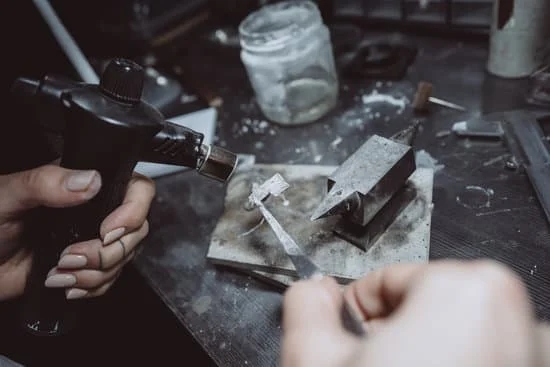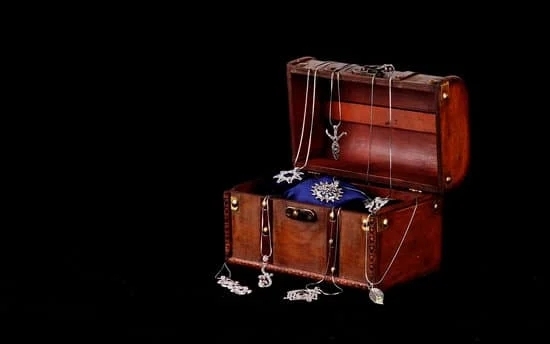Ancient Roman jewelry has long captivated the imagination with its opulence and intricate designs. From grand necklaces adorned with precious gemstones to delicate earrings crafted with meticulous precision, these ornate treasures have left a lasting legacy in the world of adornment. In this blog post, we delve into the rich history and cultural context surrounding ancient Roman jewelry to understand its significance and allure.
Ancient Roman jewelry finds its roots in a melting pot of influences. The Romans drew inspiration from various cultures such as the Etruscans, Greeks, and Egyptians, incorporating their techniques and styles into their own creations. This fusion resulted in unique designs that showcased the craftsmanship and artistic vision of Roman artisans.
When exploring ancient Roman jewelry, one cannot overlook the materials and techniques used in its creation. Gold, silver, gemstones, and glass were just some of the materials employed by skilled craftsmen. They utilized sophisticated techniques like gemstone cutting and granulation to bring these precious materials to life.
But beyond their aesthetic appeal, ancient Roman jewelry was imbued with symbolism and significance. Motifs inspired by mythology, nature, and deities adorned these exquisite pieces, reflecting the cultural importance of jewelry in ancient Roman society. These adornments acted as status symbols and served as personal expressions of wealth and power.
As we embark on this journey through the world of ancient Roman jewelry, we invite you to appreciate the stunning craftsmanship that has stood the test of time. Whether you are an enthusiast eager to learn more or simply curious about this chapter in history, this exploration promises to deliver insights into a captivating era defined by luxury, beauty, and enduring elegance.
Origins and Influences
Ancient Roman jewelry is renowned for its exquisite craftsmanship and intricate designs, but what were the origins and influences that shaped these masterpieces? To truly appreciate the beauty of Roman jewelry, it is important to delve into its early beginnings and the cultures that played a significant role in shaping its aesthetics.
The Etruscans, an ancient civilization that existed before the rise of Rome, had a profound influence on Roman jewelry. The Etruscans possessed advanced knowledge in metalworking techniques and their craftsmanship was highly admired by the Romans.
Techniques such as granulation, where tiny metal balls are fused onto a surface to create intricate patterns, were adopted from Etruscan artisans. The love for bold, chunky pieces adorned with colorful gemstones, another characteristic of Etruscan jewelry design, also found its way into Roman jewelry.
Greek culture also left an indelible mark on ancient Roman jewelry. When Rome conquered Greece, they were exposed to Greek art and fashion trends. This resulted in a fusion of styles, creating a unique blend of both Greek and Roman aesthetics. Greek motifs such as laurel wreaths, palmettes, and mythological creatures could often be seen incorporated into Roman jewelry.
Egyptian culture played a significant role in influencing not just the design of ancient Roman jewelry, but also the materials used. Egypt was famous for its abundant supply of gold and precious gemstones like emeralds and amethysts. The Romans developed a fondness for Egyptian-style collar necklaces known as “torcs” made from intricately woven gold wire or beads; these became popular among both men and women.
In summary, the roots of ancient Roman jewelry can be traced back to several key cultures: the Etruscans’ sophisticated metalworking techniques and bold designs; the Greeks’ artistic influences from mythology; and finally, Egypt’s opulent use of gold and gemstones. These early influences laid the foundation for the opulence and grandeur that would become synonymous with ancient Roman jewelry.
Materials and Techniques
In the world of ancient Roman jewelry, craftsmanship and attention to detail were paramount. The artisans of Rome utilized a wide array of materials and sophisticated techniques to create exquisite pieces that have stood the test of time.
Materials Employed in Crafting Roman Jewelry
One of the most prized materials used by ancient Roman jewelers was gold. Gold was highly sought after due to its brilliance, durability, and scarcity, making it a symbol of wealth and status. Silver was also widely used, often paired with gold in intricate designs.
Gemstones played a significant role in Roman jewelry as well. Precious stones like emeralds, sapphires, rubies, and diamonds were highly coveted. Semi-precious gemstones such as amethysts, garnets, pearls, and turquoise were also popular choices. These stones were carefully cut into various shapes to maximize their beauty.
Another material that contributed to the allure of Roman jewelry was glass. Glass beads were commonly incorporated into necklaces and bracelets for added color and visual interest. Glass was also used as a substitute for gemstones in certain pieces.
Roman Jewelry-Making Techniques
Roman artisans employed several sophisticated techniques that enhanced the beauty and intricacy of their jewelry. One notable technique is granulation, which involved attaching tiny orbs or granules of precious metal onto a larger metal surface using heat. This technique created intricate patterns and added texture to the jewelry.
Gemstone cutting was another skill mastered by ancient Roman jewelers. They utilized various cutting styles, such as cabochon (smooth rounded shape), cameo (a raised relief design), intaglio (an incised design), or facet cutting (precision-cut multi-faced gemstones). These different cutting styles allowed for a range of designs and effects on gemstones.
Engraving was also prevalent in ancient Roman jewelry. Artisans would carefully carve intricate designs and patterns onto metal surfaces, adding a touch of elegance and personalization to each piece.
By employing these innovative techniques and utilizing a diverse range of materials, ancient Roman jewelers were able to create stunning pieces of jewelry that have captivated generations. The legacy of their craftsmanship lives on in the timeless beauty and allure of ancient Roman jewelry.
Symbolism and Significance
Ancient Roman jewelry was not only renowned for its exquisite craftsmanship, but also for the rich symbolism and cultural significance embedded within each piece. The intricate designs of Roman jewelry often drew inspiration from mythology, nature, and deities, serving as powerful expressions of personal beliefs and social status.
One of the most prevalent symbols in ancient Roman jewelry was that of the snake, which held a range of meanings. The snake was associated with both fertility and rebirth, as it shed its skin and emerged anew. It was also linked to wisdom and protection, with serpent-shaped bracelets or rings believed to ward off evil spirits. Similarly, pieces adorned with images of dolphins conveyed themes of love, happiness, and good luck.
Roman jewelry also frequently featured motifs inspired by nature, such as flowers, birds, and animals. These motifs were not merely decorative; they symbolized various aspects of life and represented different virtues or qualities. For example, a necklace with a pendant showcasing a bird in flight could signify freedom or divine protection. Floral designs were often used to celebrate fertility and beauty.
Another significant aspect of ancient Roman jewelry was its association with deities and religious beliefs. Many pieces boasted small charms or pendants depicting gods or goddesses worshiped in Roman religion. For instance, necklaces featuring the image of Venus symbolized love and beauty; while those adorned with an image of Jupiter connoted power and authority.
In ancient Roman society, jewelry held immense cultural importance beyond its aesthetic value. It served as a status symbol for individuals to exhibit their wealth and social standing. And just like today’s engagement rings or wedding bands carry symbolic meaning in modern Western culture, ancient Romans used jewelry to communicate marital status or affiliation with certain social groups.
The symbolism embedded in ancient Roman jewelry is truly fascinating, shedding light on the values and beliefs cherished by this vibrant civilization. Through careful examination and interpretation of these intricate designs, we can gain a deeper understanding of the significance that jewelry held in Roman society. By appreciating the hidden meanings behind these adornments, we can unravel captivating stories from the past and truly grasp the timeless beauty of ancient Roman jewelry.
– Symbols commonly found in Roman jewelry:
– Snakes: fertility, rebirth, wisdom, protection
– Dolphins: love, happiness, good luck
– Birds: freedom, divine protection
– Flowers: fertility, beauty
– Depictions of gods and goddesses:
– Venus: love, beauty
– Jupiter: power, authority
– Jewelry as a status symbol.
– Jewelry as a communication tool for marital status or social affiliation.
Jewelry for Wealthy Patricians
The Opulence of Elite Jewelry
One of the defining characteristics of ancient Roman society was its stark social hierarchy, with the wealthy patricians at the pinnacle. These elite members of society spared no expense when it came to their appearance, using lavish jewelry as a means to showcase their wealth and status. The jewelry worn by wealthy patricians during the Roman Empire was marked by its opulence, intricate details, and exclusivity.
Intricate Necklaces and Bracelets
Among the most impressive pieces favored by wealthy Romans were necklaces and bracelets. These grand adornments were often adorned with precious gemstones such as rubies, emeralds, and sapphires, set in intricate gold or silver settings. The craftsmanship seen in these pieces was truly remarkable, with delicately woven chains, intricate pendant designs, and meticulously carved gemstone settings.
The necklaces showcased a variety of exquisite designs ranging from elegant chokers to dramatic multiple-strand pieces that draped gracefully along the wearer’s collarbone. Bracelets worn by patrician women were equally elaborate and could be adorned with charms, pearls, or even miniature carved figures. These extravagant pieces were not only symbols of status but also served as conversation-starters and displays of taste within Roman high society.
Earrings and Brooches: The Finishing Touches
To complete their ensemble, wealthy patricians adorned themselves with exquisitely crafted earrings and brooches. Earrings featured long pendants that hung gracefully from intricately designed studs or hoops. These pendants could be embellished with gemstones or delicate carvings depicting mythical figures or scenes from Greek mythology.
Brooches held a significant role in Roman fashion, serving both functional and decorative purposes. They were used to fasten voluminous togas or tunics together while also adding a touch of elegance to the overall ensemble. Roman brooches were often decorated with intricate engravings, gemstones, or miniature sculptures of animals or deities.
Exclusivity and Rare Materials
The extravagance of jewelry for wealthy patricians extended beyond its design and craftsmanship. The materials used in creating these prestigious pieces were sought after for their rarity and exclusivity. Gold was one of the most prized metals, not only for its aesthetic appeal but also as a symbol of wealth and power. Silver was also highly valued, particularly when it was combined with gold to create two-toned designs.
In addition to precious metals, gemstones held immense value in Roman society. The wealthy elite adorned themselves with a wide range of gemstones, including pearls, emeralds, rubies, sapphires, and amethysts. These gemstones were often imported from various regions across the empire and beyond.
With their luxurious materials paired with intricately detailed designs, the jewelry worn by wealthy patricians in ancient Rome truly exemplified extravagance and exclusivity. These opulent pieces not only showcased the social status of their wearers but also reflected the exceptional artistry and craftsmanship of Roman artisans during this remarkable era.
Jewelry for the Masses
During ancient Roman times, jewelry was not solely reserved for the wealthy elite. While the aristocracy indulged in extravagant and ornate pieces, there were also accessible adornments available for everyday Romans. This section will explore the contrasting nature of jewelry for the masses, highlighting the significance of amulets, rings, and simple earrings in the lives of ordinary citizens.
For common Romans, jewelry often served a practical purpose, acting as symbols of protection or identification. Amulets, which were small pendants or charms worn on a necklace or bracelet, held great significance in Roman society. These amulets were believed to have supernatural powers that could ward off evil spirits or protect against illness and misfortune. Common amulet shapes included phallic symbols, hands (known as “mano fatte”), and various animals such as snakes or frogs.
Rings were another popular form of jewelry among everyday Romans. These rings typically featured simple designs and were often engraved with personal inscriptions or images representing important aspects of one’s life or beliefs. Some wore seal rings for official purposes, as they could be used to make impressions on wax to authenticate documents and secure written communications.
Simple earrings made from materials such as cheap metals or glass beads were also prevalent among the masses. These earrings varied in design but were generally less intricate compared to those worn by the wealthier class. They served both decorative and functional purposes, with some styles specifically designed to enhance one’s hearing or improve their eyesight.
While aristocratic Romans may have flaunted their opulent jewelry, it is essential not to overlook the significance of more accessible adornments worn by everyday citizens in ancient Rome. Amulets symbolized protection and spirituality, rings allowed individuals to showcase personal beliefs and status, while simple earrings provided both adornment and practicality. These pieces offer valuable insights into the customs and daily lives of ordinary Romans during this fascinating period in history.
Roman Jewelry and Fashion
Throughout history, jewelry has served as a reflection of societal values and cultural identity. Ancient Roman jewelry not only encapsulated the opulence and luxury that characterized the Roman Empire, but it also left a lasting influence on fashion trends that can still be seen today. The combination of intricate designs, precious materials, and symbolic motifs made Roman jewelry a timeless treasure.
The influence of ancient Roman jewelry is evident in contemporary fashion trends. Many designers draw inspiration from the classical elegance and refined aesthetic of Roman jewelry, incorporating similar elements into their collections. For example, the use of bold gold statement pieces with intricate detailing can be traced back to Roman craftsmanship. Additionally, the incorporation of gemstones and pearls in modern jewelry designs can be attributed to the Romans’ love for adorning themselves with these precious stones.
Notable individuals, such as celebrities and public figures, have been spotted wearing Roman-inspired jewelry on red carpets and at high-profile events. This further showcases the enduring appeal and modern relevance of this ancient style. The revival of Roman jewelry does more than just pay tribute to its historical significance; it also allows individuals to feel connected to an ancient civilization known for its grandeur and splendor.
| Key Elements | Examples in Contemporary Fashion |
|---|---|
| Bold gold statement pieces | Chunky gold chain necklaces |
| Intricate detailing | Filigree designs on earrings |
| Gemstones and pearls | Gemstone-encrusted rings or pearl-drop earrings |
Roman jewelry continues to captivate the imagination of people worldwide. Its enduring influence on fashion is a testament to the skill and artistry of ancient Roman craftsmen. By embracing the elegance and grandeur of Roman jewelry, individuals can bring a touch of timeless beauty and historical significance into their own lives.
Legacy and Preservation
After the fall of the Roman Empire, ancient Roman jewelry faced an uncertain fate. With the decline in power and influence, many of these exquisite adornments were lost or destroyed. However, thanks to ongoing archaeological excavations and preservation efforts, a significant amount of ancient Roman jewelry has been rediscovered and is now showcased in museums and historical collections around the world.
Archaeological discoveries have played a crucial role in preserving the legacy of ancient Roman jewelry. Excavations at sites such as Pompeii, Herculaneum, and Villa Adriana have unearthed stunning pieces that provide valuable insights into the craftsmanship and style of ancient Rome. These artifacts have allowed experts to study and analyze the techniques used by Roman artisans, as well as their materials of choice.
To ensure the preservation of these delicate treasures, extensive restoration work is carried out by skilled experts. This involves cleaning, repairing, and sometimes reconstructing damaged pieces to best portray their original splendor. Additionally, specialized display cases are designed to protect the jewelry from environmental factors such as light exposure and humidity.
The rediscovery and preservation of ancient Roman jewelry not only allows us to appreciate its beauty but also provides a window into the lives of those who wore them. By studying these adornments, we can gain a deeper understanding of social status, cultural values, and fashion trends during ancient Rome.
| Archaeological Discoveries | Preservation Efforts |
|---|---|
| Excavations at Pompeii, Herculaneum, Villa Adriana | Cleaning, repairing and reconstructing damaged pieces |
| Insights into craftsmanship and style | Specialized display cases for protection |
Conclusion
In conclusion, the history of ancient Roman jewelry is a testament to the opulence and artistic brilliance of the Roman Empire. Through this exploration, we have discovered the origins and influences that shaped Roman jewelry designs, the materials and techniques utilized by Roman artisans, as well as the symbolism and significance behind these exquisite adornments.
One cannot help but be in awe of the luxurious pieces worn by wealthy patricians during the Roman Empire. These intricately crafted necklaces, bracelets, earrings, and brooches exemplify the extravagance and exclusivity that characterized aristocratic life. On the other hand, we have also seen how simpler pieces like amulets, rings, and simple earrings held great significance in the lives of everyday Romans.
The enduring appeal of ancient Roman jewelry is evident in its influence on contemporary fashion trends. The timeless beauty of Roman designs continues to captivate designers and fashion enthusiasts alike, leading to their reinterpretation in modern times. Whether it be through incorporating motifs inspired by mythology or utilizing techniques such as granulation, ancient Roman jewelry has left an indelible mark on the world of fashion.
To fully appreciate the allure and craftsmanship of ancient Roman jewelry, one can delve deeper into museums and historical collections where these remarkable pieces are preserved. By doing so, we not only gain a greater understanding of their cultural importance but also ensure their survival for future generations to admire. The legacy of ancient Roman jewelry lives on through these efforts and serves as a reminder of the rich history left behind by this magnificent civilization.

Welcome to my jewelry blog! My name is Sarah and I am the owner of this blog.
I love making jewelry and sharing my creations with others.
So whether you’re someone who loves wearing jewelry yourself or simply enjoys learning about it, be sure to check out my blog for insightful posts on everything related to this exciting topic!





